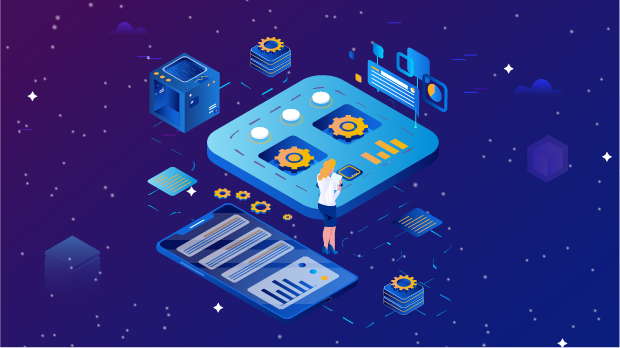How do I test the speed of my US proxy IP?
Testing the speed of U.S. proxy ips is essential for ensuring that your online activities, whether browsing, streaming, or accessing geo-restricted content, remain seamless and efficient. Proxy servers act as intermediaries between your device and the internet, routing your traffic through different IP addresses to mask your identity and location. To evaluate their performance, several factors, including latency, download speed, and consistency, must be measured. This article will guide you through the process of testing U.S. proxy ips' speed, offering insights into the tools, techniques, and metrics involved in obtaining accurate results. The following analysis will explore why testing speed is vital and how you can achieve optimal performance. Understanding the Importance of Speed Testing for U.S. Proxy IPsWhen using proxies, speed is a critical factor that directly impacts your online experience. Slow proxies can lead to frustrating delays, buffering, or failed connections, which can be particularly problematic for time-sensitive tasks like streaming or accessing critical online services. By testing the speed of a U.S. proxy IP, you can ensure that the server you are using meets the necessary requirements for your activities. Additionally, speed tests help identify which proxy server offers the best balance of low latency, high download speeds, and minimal packet loss, which is crucial for users who depend on high-performance proxies for various needs.Key Metrics to Measure When Testing Proxy SpeedTo effectively test a U.S. proxy IP’s speed, there are several key metrics you need to monitor:1. Latency (Ping Time): Latency refers to the delay between your request and the server’s response. A lower latency is crucial for activities that require real-time responses, such as gaming or video conferencing. Latency is typically measured in milliseconds (ms). A high ping indicates slower communication between your device and the proxy server, leading to noticeable delays. 2. Download and Upload Speeds: These metrics measure how fast data is transferred from the proxy server to your device (download speed) and vice versa (upload speed). Fast download speeds are vital for tasks like streaming HD videos or downloading files, while high upload speeds are necessary for uploading content or engaging in live streaming activities. 3. Packet Loss: This refers to the percentage of data packets that fail to reach their destination. A higher rate of packet loss can degrade the quality of your connection, causing issues such as stuttering during video calls or slow loading times. Monitoring packet loss helps ensure your proxy server delivers a reliable connection.Methods to Test the Speed of a U.S. Proxy IPThere are several approaches you can take to test the speed of a U.S. proxy IP. Here are some of the most effective methods:1. Using Online Speed Test Tools: The simplest and most accessible way to test proxy speeds is by using online speed test tools. These tools measure latency, download, and upload speeds directly by connecting to a server through your proxy. Popular websites offer these services and allow you to select a server located in the United States. The tool will give you a report of the connection speed, helping you determine whether the proxy meets your requirements. - To ensure accurate results, make sure to choose a testing server that is geographically close to your proxy IP's location. If the tool allows it, select a U.S.-based server to simulate real-world conditions.2. Using Command-Line Tools: For more advanced users, command-line tools like "ping" and "traceroute" can be used to test the latency and the route your data takes when using a U.S. proxy IP. These tools are especially useful for diagnosing network issues, such as long response times or routing inefficiencies, that could negatively impact the speed of your proxy. - Ping: To measure latency, you can ping the proxy server and observe how long it takes to get a response. A lower ping value is indicative of faster speed and lower delay. - Traceroute: This tool allows you to trace the path your data takes through various routers and servers. If the route is inefficient or takes a long detour, it can increase the overall latency and slow down the connection speed.3. Web Browsing Test: Another straightforward method is to test the speed through regular web browsing. By visiting different websites, you can get a general sense of how fast your connection is. If pages take too long to load or if media content buffers frequently, it may indicate a slower proxy connection. - You can also test specific web activities like streaming, downloading, or uploading files to evaluate how the proxy affects different tasks. If these activities run smoothly, it's likely that your proxy IP is functioning efficiently.4. Automated Proxy Speed Test Tools: For users managing multiple proxies or requiring detailed reports, automated tools are available that test the speed of U.S. proxy IPs over time. These tools run periodic tests and can aggregate the results to provide a comprehensive overview of each proxy’s performance. This is particularly useful for businesses that rely on proxies for scraping, SEO tasks, or other automated activities.Factors That Affect Proxy SpeedWhen testing the speed of a U.S. proxy IP, it is essential to consider various factors that can impact performance:1. Proxy Server Load: The number of users connected to the proxy server can affect its speed. If the server is overloaded with too many connections, it may become slower, leading to higher latency and reduced download speeds. Opting for a less congested proxy server can improve your speed.2. Geographical Distance: The physical distance between your location and the U.S. proxy server can also impact the speed. The farther away you are from the server, the higher the latency will be. For optimal performance, it is ideal to use proxies that are closer to your actual location or the content you intend to access.3. Type of Proxy: The type of proxy (HTTP, SOCKS5, etc.) can also affect its performance. socks5 proxies, for example, tend to be faster and more reliable than HTTP proxies, especially for activities like torrenting or online gaming, due to their efficient handling of traffic.4. Network Congestion and ISP Throttling: Network congestion, both on the proxy server side and your local internet service provider, can result in slower speeds. Additionally, some ISPs engage in traffic throttling, which can reduce the speed of your proxy connection.Optimizing U.S. Proxy SpeedOnce you’ve tested the speed of your U.S. proxy IP, there are several strategies you can use to optimize its performance:1. Switch Proxy Servers: If your current proxy server is slow, try switching to another U.S. server with lower load or a better geographical location relative to your needs. 2. Use a Dedicated Proxy: Instead of using a shared proxy, which can be slower due to high usage, consider using a dedicated proxy IP. Dedicated proxies ensure that you have exclusive use of the server’s resources, which typically leads to better performance.3. Upgrade Your Proxy Plan: Many proxy services offer different plans based on speed and bandwidth. Upgrading to a premium plan can provide faster proxies with higher bandwidth limits and lower latency.4. Optimize Your Local Network: Ensure that your local network is optimized for high-speed internet. This includes using a stable Wi-Fi connection, avoiding heavy background downloads, and ensuring that your device is free from unnecessary applications that might consume bandwidth.ConclusionTesting the speed of U.S. proxy IPs is crucial for anyone who relies on proxies for secure, fast, and reliable internet access. By evaluating key metrics such as latency, download speed, and packet loss, you can identify the best-performing proxies for your specific needs. Understanding how to use tools like speed test websites, ping, and traceroute commands will provide you with the insights needed to assess proxy performance accurately. With the right approach and optimizations, you can ensure that your proxy setup provides seamless browsing, streaming, and access to geo-restricted content, enhancing your overall internet experience.
2025-02-10
























































